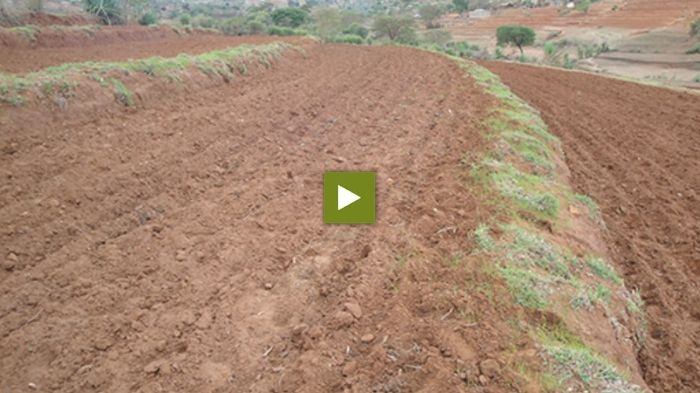Fanya juu terraces have provided a framework to Kenya‘s successful soil and water conservation programme. Cultivation becomes easier as the terraces spread out to make the land more level and when combined with manure yields increase.
There are mostly used by farmers with sloping lands to help in water conservation and prevent soil erosion.
Construction
Soil is dugged from the trenches and thrown upwards to farm banks of about 40 to 50 cm height and about 10 to 20m apart depending on the steepness of the field. Construction and maintenance is carried out using hand tools to maintain the height of the banks.
Over the time soil between the banks even out through surface erosion and tillage. Level benches can be the result. Grass is planted on the terraces to stabilize the bank. Throwing soil up the terraces is necessary to maintain height of the terraces.
In higher heavy rainfall conditions, napier grass is favoured as it provides fodder. Bananas thrive on the moist conditions below the banks.
Benefits
The fanya juu terraces help conserve moisture and prevent soil erosion hence stabilizing and improving yield of crops.
Trees such as mangoes, pawpaw and the multi-purpose Grevillea robusta, are planted in combination with the fanya juu terraces.
The fanya juu terraces have proved their versatility and are an insurance against climate change. Fanya juu terraces form the backbone of smallholder farmer families in Eastern Kenya.



















